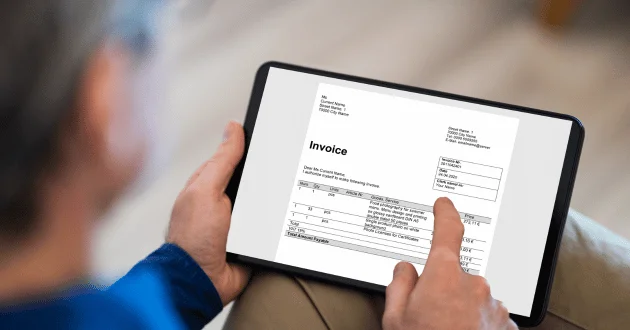
Welcome to our blog! In today’s post, we will unravel the mysteries of double-entry accounting and provide you with a simple yet comprehensive guide. Whether you’re a business owner, an aspiring accountant, or simply someone interested in understanding the financial world, this article is for you. By the end of this guide, you’ll have a clear understanding of what double-entry accounting is and how it can benefit you or your business. So, let’s dive right in and demystify this essential aspect of financial management.
- What is Double Entry Accounting?
- Principles of Double Entry Accounting
- Components of Double-Entry Accounting
- Benefits of Double-Entry Accounting
- Examples of Double-Entry Accounting Transactions
- Financial Statements in Double-Entry Accounting
- Importance of Double-Entry Accounting in Business
- Advantages and Disadvantages of Double Entry Accounting
- Double-Entry Accounting Software and Tools
- Common Mistakes in Double-Entry Accounting
- Conclusion
- Frequently Asked Questions
What is Double Entry Accounting?
Double-entry accounting is a fundamental concept in the field of finance and bookkeeping. It is a method of recording financial transactions that ensures accuracy and transparency in the accounting process. In this system, every transaction is recorded with at least two entries: a debit and a credit. The debits and credits must always balance, resulting in a zero-sum equation. This approach allows for a comprehensive and organized representation of a company’s financial activities, providing a clear picture of its assets, liabilities, and equity.
By using double-entry accounting, businesses can maintain accurate financial records, facilitate analysis and decision-making, and ensure compliance with accounting standards and regulations. It is a vital tool for financial management, enabling businesses to track their financial health and plan for future growth.
Principles of Double Entry Accounting
The first principle is the duality principle, which states that every transaction has two aspects: a debit and a credit. This principle ensures that for every debit made to an account, there must be a corresponding credit made to another account.
The second principle is the principle of historical cost, which states that transactions should be recorded at their original cost. This principle helps maintain consistency and reliability in financial reporting.
The third principle is the principle of matching, which states that expenses should be matched with the revenues they generate in the same accounting period. This principle ensures that financial statements accurately reflect the profitability of a business.
The fourth principle is the principle of consistency, which states that once an accounting method is chosen, it should be consistently applied. This principle promotes comparability and allows for meaningful analysis of financial data.
Finally, the principle of materiality states that only significant information should be included in financial statements. This principle helps ensure that financial statements provide users with relevant and reliable information for decision-making. By adhering to these principles, businesses can maintain accurate and reliable financial records that serve as a foundation for sound financial management.
Components of Double-Entry Accounting
To implement double-entry accounting effectively, several key components need to be understood.
The first component is the chart of accounts, which organizes all the different accounts used in the accounting system. This includes assets, liabilities, equity, revenues, and expenses. Each account is assigned a unique code or number to easily identify and track transactions.
Another important component is the general ledger, which serves as the central repository for all accounting transactions. It contains separate accounts for each item in the chart of accounts and provides a detailed record of all financial activities.
The third component is the trial balance, which is a summary of all the accounts in the general ledger. Its purpose is to ensure that the total debit balances equal the total credit balances, thus maintaining the fundamental principle of duality in double-entry accounting.
Lastly, a key component of double-entry accounting is the process of reconciling accounts. This involves comparing and verifying the balances in the general ledger and subsidiary ledgers, as well as resolving any discrepancies that may arise. Through this process, errors or discrepancies can be identified and corrected, ensuring the integrity and reliability of the financial data.
Benefits of Double-Entry Accounting
The benefits of double-entry accounting are numerous and essential for maintaining accurate and reliable financial records. One of the key advantages is the ability to detect errors and discrepancies. Since every transaction is recorded in at least two accounts, any mistakes or omissions can be easily identified when the debits and credits do not balance. This ensures that financial statements are accurate and trustworthy, allowing businesses to make informed decisions based on reliable data.
Double-entry accounting also provides a clear audit trail. With each transaction being recorded in multiple accounts, it becomes easier to track the flow of funds and determine the source and destination of money. This is especially beneficial for businesses that may face regulatory compliance requirements or undergo external audits, as it streamlines the process and provides transparency.
Double-entry accounting allows for better financial analysis and reporting. By having a detailed record of each transaction, businesses can generate comprehensive financial statements and reports that provide insights into their financial performance. This enables management to identify trends, evaluate profitability, and make informed decisions to drive growth and success.
Examples of Double-Entry Accounting Transactions
In double-entry accounting, every transaction involves at least two accounts and follows the fundamental principle of debits and credits. Let’s consider a few examples to illustrate this concept.
For instance, when a business purchases inventory with cash, there are two accounts involved: the Inventory account and the Cash account. The Inventory account will be debited, increasing the value of inventory on the balance sheet, while the Cash account will be credited, reflecting the decrease in cash. This transaction adheres to the double-entry system, ensuring that the equation “Assets = Liabilities + Equity” remains balanced.
Another example is when a business receives payment from a customer for services rendered. In this case, the Accounts Receivable account will be debited, reducing the amount owed by the customer, while the Cash account will be credited, increasing the cash on hand.

Financial Statements in Double-Entry Accounting
Financial statements in double-entry accounting are essential tools that provide a comprehensive view of a company’s financial performance and position. These statements include the income statement, balance sheet, and cash flow statement. The income statement summarizes a company’s revenues, expenses, and net income or loss for a specific period. It helps stakeholders evaluate the profitability and efficiency of the business.
The balance sheet presents a snapshot of a company’s assets, liabilities, and shareholders’ equity at a given point in time. It allows users to assess the company’s financial health and solvency. The cash flow statement reports the inflows and outflows of cash from operating, investing, and financing activities. It provides insights into a company’s liquidity and cash management. These financial statements, created through double-entry accounting, provide valuable information for decision-making and financial analysis.
Importance of Double-Entry Accounting in Business
Double-entry accounting is a fundamental concept in the field of finance and plays a crucial role in businesses of all sizes. By following the principles of double-entry accounting, companies can maintain accurate and reliable financial records. This method ensures that every financial transaction is recorded in two separate accounts, one debiting an amount and the other crediting an equal amount. This not only helps in detecting errors and inconsistencies but also provides a clear trail of financial activities, making it easier to track and analyze financial performance. With double-entry accounting, businesses can have a better understanding of their revenues, expenses, assets, and liabilities, enabling them to make informed decisions, evaluate profitability, and assess the overall financial health of the organization.”
Advantages and Disadvantages of Double Entry Accounting
Double-entry accounting comes with its fair share of advantages and disadvantages. It offers accurate financial records, improved analysis capabilities, and increased accountability. Let’s explore the advantages and disadvantages of this widely used accounting method.
Advantages of Double-Entry Accounting:
- Accuracy and Reliability: Double-entry accounting ensures the accuracy and reliability of financial records. By recording each transaction in two separate accounts, it reduces the risk of errors and fraud. This provides a clear and comprehensive picture of the financial position of the business.
- Error Detection: The dual recording of transactions in double-entry accounting allows for easy detection and correction of errors. If the debit and credit entries do not match, it indicates an error that needs to be investigated and rectified. This helps in maintaining the integrity of financial information.
- Financial Analysis: Double-entry accounting provides a solid foundation for financial analysis. With well-maintained records, businesses can generate meaningful reports for analyzing profitability, cash flow, and performance ratios. This helps in making informed decisions and identifying areas for improvement.
Disadvantages of Double-Entry Accounting:
- Complexity: Double-entry accounting can be complex, especially for individuals who are not familiar with accounting principles and practices. It requires a thorough understanding of debits and credits and how they are applied to various accounts. This complexity may lead to errors if not properly understood and implemented.
- Time-consuming: Maintaining double-entry accounting records can be time-consuming, especially for small businesses with limited resources. It requires meticulous record-keeping and an understanding of the underlying principles. This may divert valuable time and resources that could be utilized for other important business activities.
- Expertise Required: Double-entry accounting requires a certain level of expertise and knowledge of accounting principles. Small businesses without dedicated accounting staff may struggle to implement and maintain double-entry accounting accurately. This may result in incomplete or incorrect financial records, which can have significant consequences for decision-making and financial reporting.

Double-Entry Accounting Software and Tools
One of the key steps in implementing double-entry accounting effectively is leveraging the right software and tools. With advancements in technology, there are now numerous options available to streamline the process and ensure accuracy in financial record-keeping. Double-entry accounting software and tools offer various features such as automated journal entries, real-time reporting, and integration with banking systems. These tools not only simplify the recording and tracking of transactions but also provide insights into the financial health of the business. They offer customizable settings to accommodate specific business needs and enable seamless collaboration among team members.
Common Mistakes in Double-Entry Accounting
Proper classification and recording of transactions is crucial in double-entry accounting. Failure to do so can undermine its effectiveness. Accurate classification ensures that every transaction is recorded in the appropriate accounts, such as assets, liabilities, or equity. Another common mistake is the incorrect entry of debits and credits. In double-entry accounting, every transaction should have equal debits and credits, but errors in recording can lead to imbalances and inaccuracies in the financial statements.
Inadequate documentation and lack of reconciliation between accounts can also pose challenges. These can result in discrepancies and difficulties in identifying errors. To avoid these mistakes, businesses should have a solid understanding of double-entry accounting principles, implement proper internal controls, and regularly review and reconcile financial transactions. By doing so, accurate and reliable financial records can be maintained, enabling informed decision-making and ensuring compliance with accounting standards.
Conclusion
Double-entry accounting is a fundamental concept that every business owner and accountant should understand. By following this method, businesses can accurately track their financial transactions, identify errors, and make informed financial decisions. With its clear structure and principles, double-entry accounting provides a solid foundation for managing a company’s finances. Whether you are just starting a business or looking to improve your accounting practices, familiarizing yourself with double-entry accounting is an essential step towards financial success.


